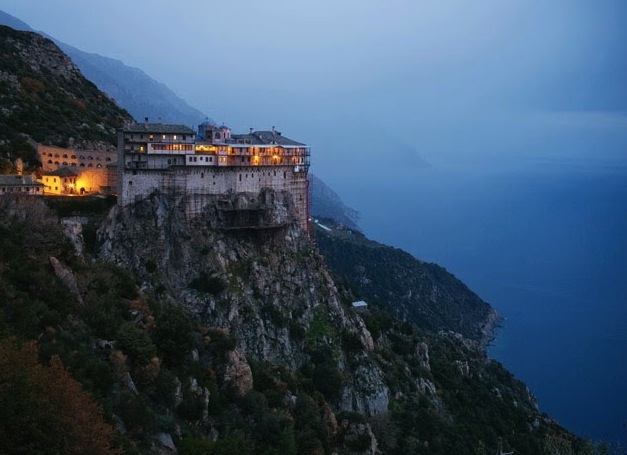 First things first.
There is a serious wildfire raging near one of the monasteries on Mount Athos, which is, without challenge, the most important center of Eastern Orthodox spirituality in the world. Few would dispute that this rocky peninsula in Greece is one of the world's most important religious centers -- period.
First things first.
There is a serious wildfire raging near one of the monasteries on Mount Athos, which is, without challenge, the most important center of Eastern Orthodox spirituality in the world. Few would dispute that this rocky peninsula in Greece is one of the world's most important religious centers -- period.
So those who care about the safety of men who have devoted their lives to praying for the world and its healing should start praying.
Now for the bizarre -- in terms of journalism -- element of this event. Frankly, I would not have believed the lede on the following Associated Press report was real, if it had not been sent around by my own priest.
So, stop and think about this.
Lives are in danger.
Thousands of irreplaceable historical manuscripts and works of holy art could be destroyed.
Suffice it to say that I could go on and on.
With all of that in mind, what is most important fact that one needs to know about Mount Athos? How do you need to identify this world-famous center for monasticism? This fact is so important, in fact, that it must be mentioned in both of the top paragraphs in this short, urgent news report:
A large forest fire that broke out at a remote monastic community in Greece where women have not been allowed for a thousand years spread Thursday to a nearby resort area, forcing the evacuation of a seaside vacation village and sending up a thick pall of smoke over the area.
It was not clear how the fire started Wednesday on the Mount Athos peninsula, a World Heritage site and self-ruled community of Orthodox monks that bans women -- and even female animals -- from entering. Officials said no damage was caused to the northern Greek peninsula's 20 medieval monasteries, which visitors can only access by sea.
The story does, later, get around to mentioning the name of the monastery that is in danger. I guess that readers can be grateful for that.
The fire brigade said the conflagration started in a remote area in the vicinity of the Serbian Hilandar Monastery, the peninsula's northernmost monastery and one that was badly damaged by fire in 2004. It was unclear how it started, and no immediate estimate was available on the extent of the burned area.
Greece is in the grips of a heat wave, and wildfires have been burning around the country.
As a rule, the Holy Mountain tends to receive pretty nuanced, high-quality coverage -- I guess because it is such a unique, complex and historic place that journalists can't help but take seriously the stark and humble lives of the men who labor there. Click here for some examples, or click here for a GetReligion post on a particularly good CBS "60 Minutes" feature.
As for this Associated Press report, I will now just shut up and turn my attention to prayers.
